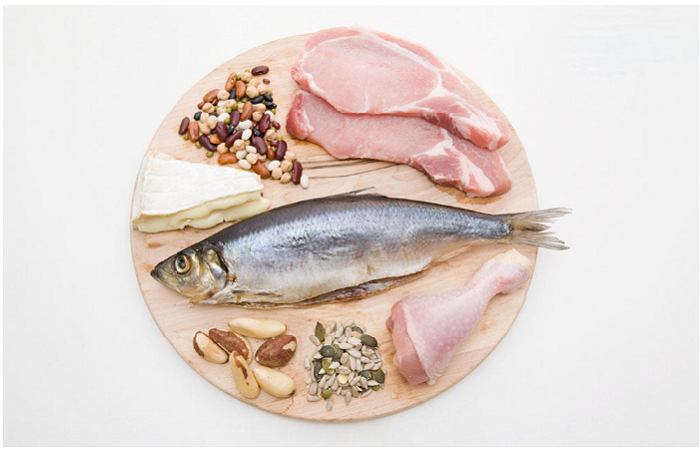
People who should be on a high-protein diet – More than half of Americans are striving to put more protein on their plates, according to a survey by research firm the NPD Group. We’re sprinkling protein powder into yogurt, oatmeal, and smoothies and buying snack bars and even pasta with extra grams of the stuff. But do we need to?
More..
- I waited until my wedding night to lose my virginity and I wish I hadn’t..
- 15 parents of famous Nigerian celebrities you’ll be surprised to see (With Pictures)
- 44 Countries Nigerian passport holders can visit without a Visa
- The hottest students in Babcock University – Males & Females (+Photos)
For most of us, the answer is no. David Katz, MD, director of the Yale University Prevention Research Center, believes the protein craze is for the most part just that—another craze, like low-fat in the 1980s and low-carb in the early 2000s. “All the focus on macronutrients has been a massive boondoggle—we cut fat and got fatter and sicker; we cut carbs and got fatter and sicker,” he says. “We need to stop focusing on macronutrients and instead focus on wholesome foods and healthy combinations and let the nutrients take care of themselves.”
Besides, we already get plenty of protein. The Dietary Guidelines for Americans recommend getting between 10% and 35% of your daily calories from protein. Just 10%—that’s around 46 g of protein per day for women—would be enough to meet the Recommended Daily Allowance (RDA) and prevent deficiencies, and CDC data shows that we tend to get closer to 16%.
And yet, Katz admits, certain types of people can benefit from greater protein intake. After all, we all have different bodies with individual nutritional needs, so no single protein guideline will fit all. (Take back control of your eating—and lose weight in the process—with our 21-Day Challenge!)
The best protein sources, he says, are eggs, fish, poultry, and small amounts of lean, grass-fed meats (a few 4-oz servings a week), along with beans, soy, and lentils combined with nuts and seeds or rice and grains. In other words, don’t be tempted to pile on the bacon. Although meat is certainly a high-quality protein—meaning it has the right distribution of amino acids for our body’s needs—it brings along other “passengers” that are harmful, namely saturated fat, high total fat, cholesterol, and, depending how we cook it, possibly carcinogens as well.
Here are the four types of people Katz says may benefit from higher protein intake, which means getting a bigger proportion of calories from protein—not just piling extra protein onto your regular diet.
1. Bodybuilders

If you’re doing a lot of resistance training or taxing endurance exercise, you’re tearing down muscle tissue that needs to be repaired and rebuilt. “Protein is a source of essential amino acids that are the building blocks of the body’s own proteins—and we can’t make them; we get them from food or we don’t get them at all,” Katz explains. “If you’re trying to build muscle cells and you don’t have those amino acids, you don’t build muscle.” He compares it to trying to build a house with enough brick but without shingles, or enough wood but too few bricks. “Construction just doesn’t happen,” he says. “And that’s clearly detrimental.”



































Discussion about this post